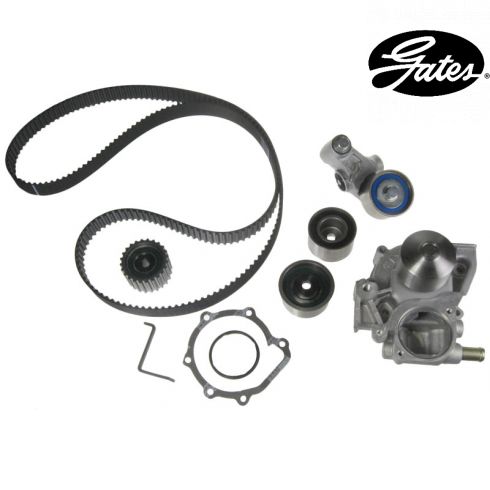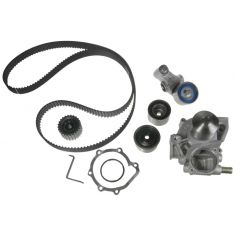GAEEK00077-Subaru Legacy Outback Timing Belt Kit with Water Pump Gates TCKWP307A

Replaces
2008 Subaru Legacy 2.5i H4 2.5L Timing Belt Kit with Water Pump Gates TCKWP307A

Frequently bought together
Product Reviews
Loading reviews
5.00/ 5.0
2
2 reviews
Nothing but good so far.
December 4, 2023
Shipping was good. works good so far.
Good fit, good video to explain. No issues.
March 6, 2024
Super easy install. Sue was super helpful in the videos. There weren't any questions I couldn't figure out. The only issue I had was getting the belt all the way on because it was a super tight fit but I found some slack on the lower pulleys as she did in the video and was able to get it on the rounded edge pulley. Took about an hour extra in combination with my head gasket replacements.
Customer Q&A
What brand is the water pump on this kit?
February 18, 2020
10
Thank you for the inquiry. This is a Gates kit with water pump, part number TCKWP307A. Please let us know if you have any other questions.
February 19, 2020
Christa R
Does this fit a stick shift or is it only for automatic?
November 18, 2020
10
This is not specific to manual vs automatic transmissions. As long as your vehicle matches the the info in the fit description it should be a direct fit!
November 18, 2020
T I
Is the water pump gasket cork or metal?
December 12, 2020
10
Cork
December 12, 2020
D A
10
Thank you for your question. Based on our pictures this gasket for the water pump is metal. Please let us know if you have any further questions.
December 14, 2020
Ricale A
does this come with the alignment tool for manual transmissions?
May 28, 2022
10
No, whatever u see is whatever u get
May 28, 2022
Bolun Y
10
No, whatever u see is whatever u get
May 28, 2022
Bolun Y
10
No this does not come with that tool, it comes just as pictured.
May 31, 2022
T I
Subaru is a registered trademark of Fuji Heavy Industries Co., Ltd. 1A Auto is not affiliated with or sponsored by Subaru or Fuji Heavy Industries Co., Ltd.
See all trademarks.








